When it’s time for Texas-based studio potter Lisa Orr to choose which color glazes she will create with, she imagines the meal she would plate on the ceramic and the colors of its fruit and vegetable ingredients: a crisp green salad with bright orange and red peppers, for example. “The most beautiful foods come from the garden, so I began framing my food with garden color,” Orr said.
Hailing from San Antonio, TX, Orr’s work (and zest for color) is largely influenced by Oaxacan dripware pottery, a style of Mexican pottery known for its colorful, lead-based glazes. Growing up near the US-Mexico border, young Orr would frequently browse the low-fire ceramic objects sold by local merchants: small figurines, tiles, and pots, that she noticed many residents turned their noses up at.
“I’d find myself staring into the surface of these Mexican pots as a child — I just loved them so much,” Orr said. “I don’t think they were meant to be art objects in a contemporary sense. They were simply objects that people actually used.”
In addition to Mexican pottery, Orr has looked at historic works made by the Tang Dynasty as well as the sprigged or embossed ornamentation of some English low-fire pottery (Staffordshire, for example) as a source of inspiration to find her own style as a developing artist. The potter’s work often transpires into asymmetrical forms — reflecting Orr’s inspiration in the moment — coated in glazes that give the ceramics a rich, jewel-like color. Gravity comes into play as it pulls on the glazes when applied, causing colors to intermingle.
Inspired by skyscapes, coral reefs, and blooming flowers, Orr adheres low-relief decorations to her works atop multicolored slip layers. The fluidity of her utilitarian works allows them to fit naturally into the hands of anyone who holds them, as they are simultaneously excited by the feel of the many textures of her pottery’s embellishments.
As an artist who experiences synesthesia, Orr’s senses collaborate to assign a color scheme to the inspiration for a given work. From there, Orr gets to work in her studio, using her collection of test tiles as a guide. “It’s just automatic. My eye craves saturated color,” Orr said. “There’s nothing prettier than a pile of ceramic stains to me.”
Orr’s work is recognizable by its blend of bold shades of red, blue, and green; however, it took time for the artist to give herself permission to use color and confidently defy the ceramic norms she was taught in her college years. As a developing artist studying at the University of Texas at Austin in the early 80s, embracing color in ceramic works was often discouraged. Orr explained that, at the time, using color was seen as gratuitous by the ceramic community. “Clay needed to reflect the Earth — the source of the material,” Orr said. “And you wanted to refrain from color to allow true art to shine through, without any trappings.”
It wasn’t until about ten years later that Orr finally accrued the confidence to experiment with color in the studio and implement it into her practice. In 1989, she studied with American ceramicist Betty Woodman, known for her inventive sculptural forms and vivid color palettes, at the University of Colorado, Boulder. When asked by her students about blending clay and color, Woodman shrugged her shoulders and replied, “Painters can use color, so why can’t we?” Orr has since made pottery with the goal of satisfying herself with the creations she takes out of the kiln. “I’m not trying to please somebody else,” Orr said.
Unlike typical museum artwork that is only meant to be experienced visually, functional pottery — whether it be a plate, bowl, or mug — is designed to be appreciated by the eyes that observe, hands that hold, and even lips that touch the object while enjoying a refreshment. “There’s something about the tactility of the material, it’s unpretentious in the way that you can use it for serving food,” Orr said. “It’s art that you are supposed to touch, and I’m very enchanted by that.”
Visitors have the opportunity to dine on Orr’s work from the Rosenfield Collection at the Everson’s new café, Louise, where each meal is paired with a specific ceramic piece, creating a harmonious blend of food and art.
— Natalie Rieth, Marketing & Development Coordinator
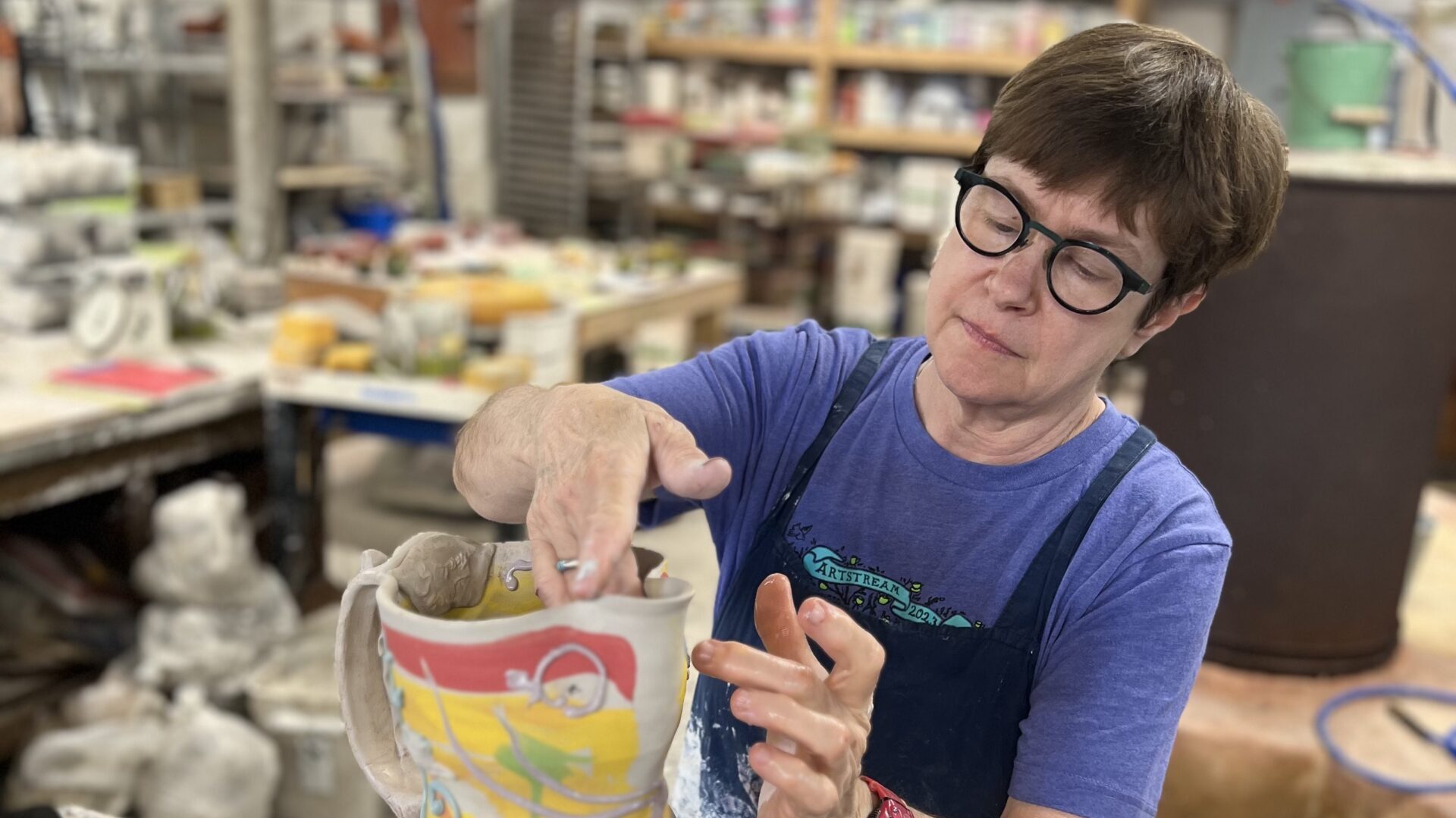
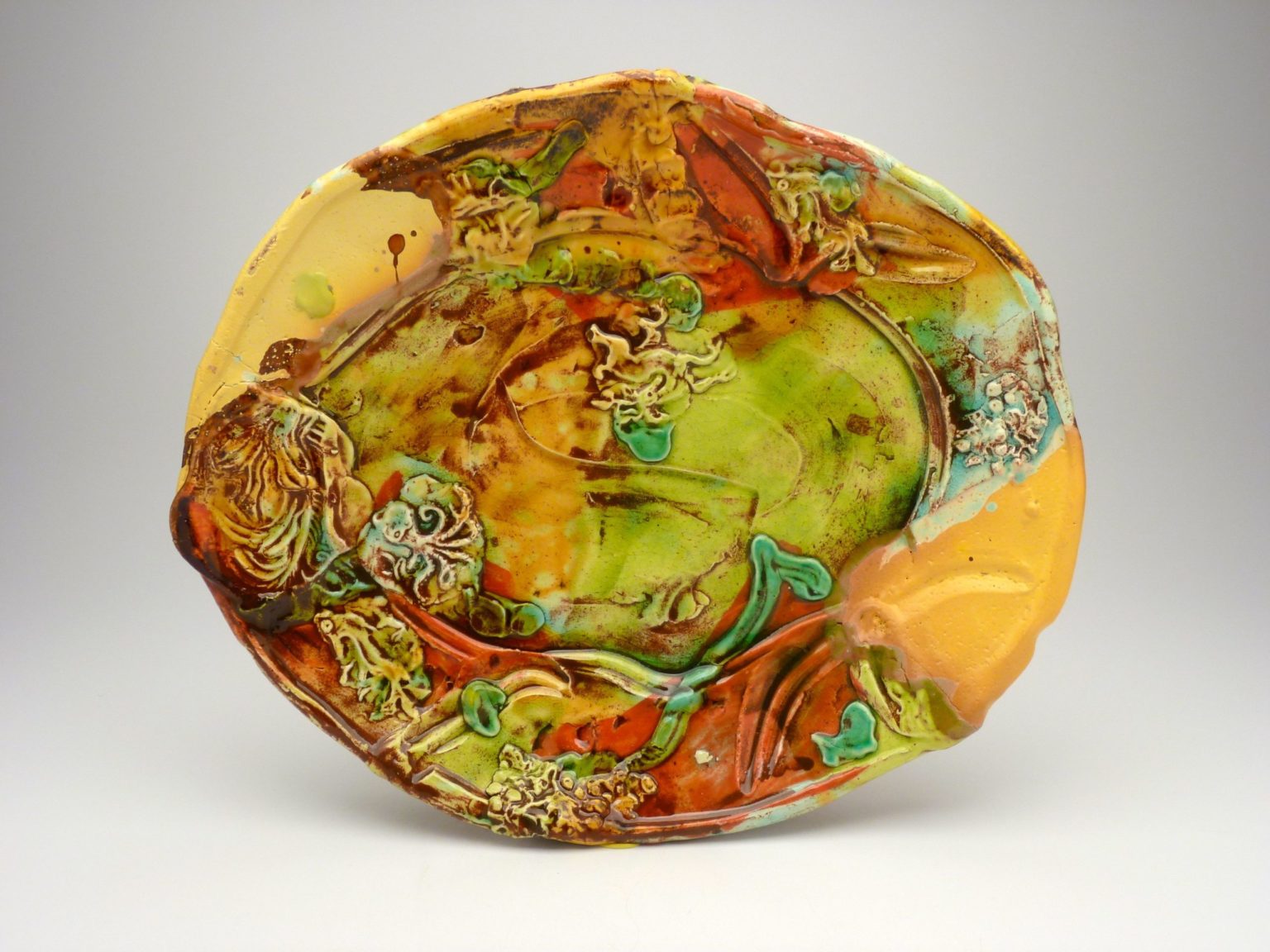
Lisa Orr, Service Ware, low fire oxidation, hand built, 13 x 11 x 2 inches, Rosenfield Collection.
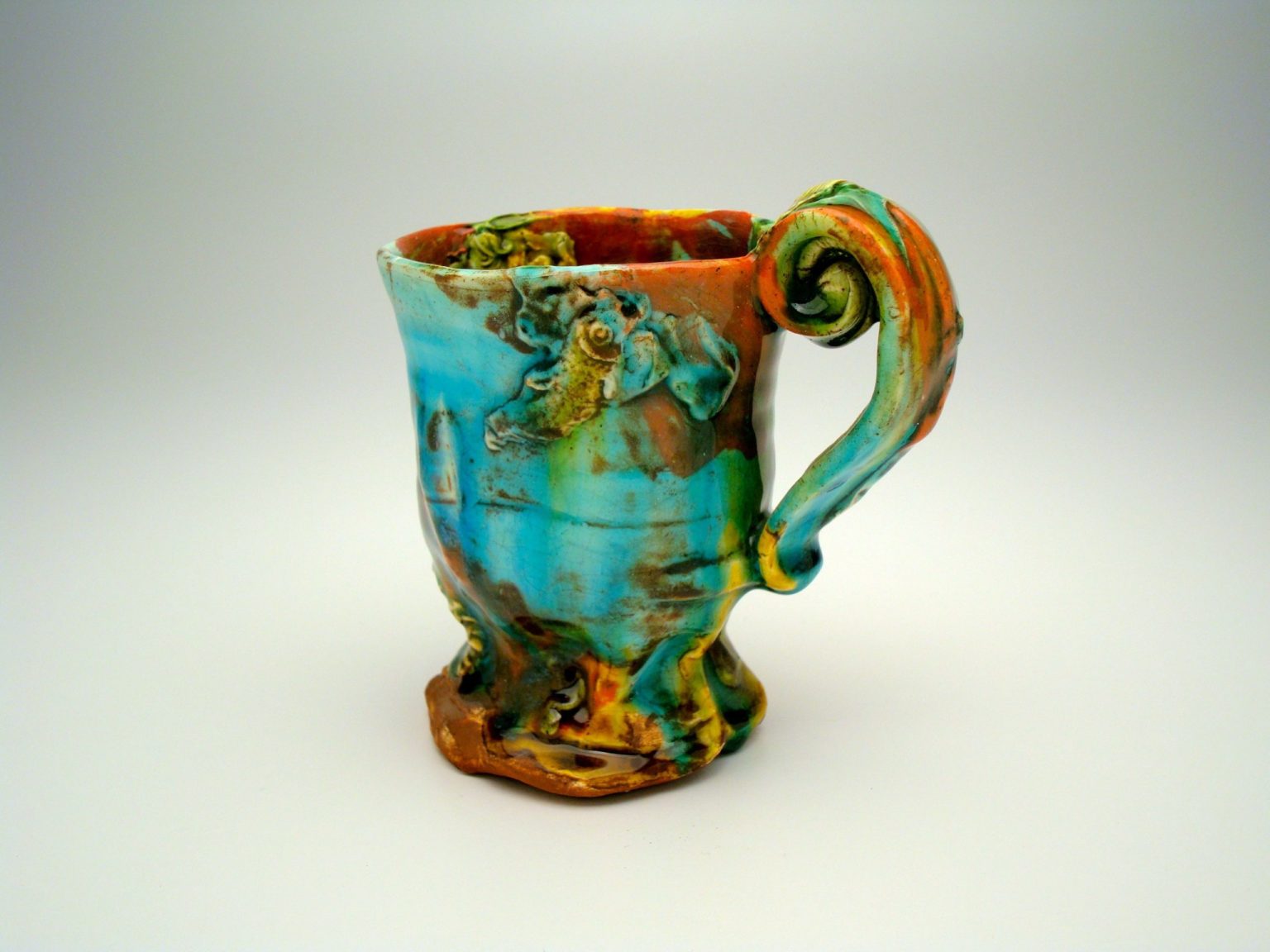
Lisa Orr, Cup, low fire oxidation, hand built, 5.5 x 3.5 x 5 inches, Rosenfield Collection.
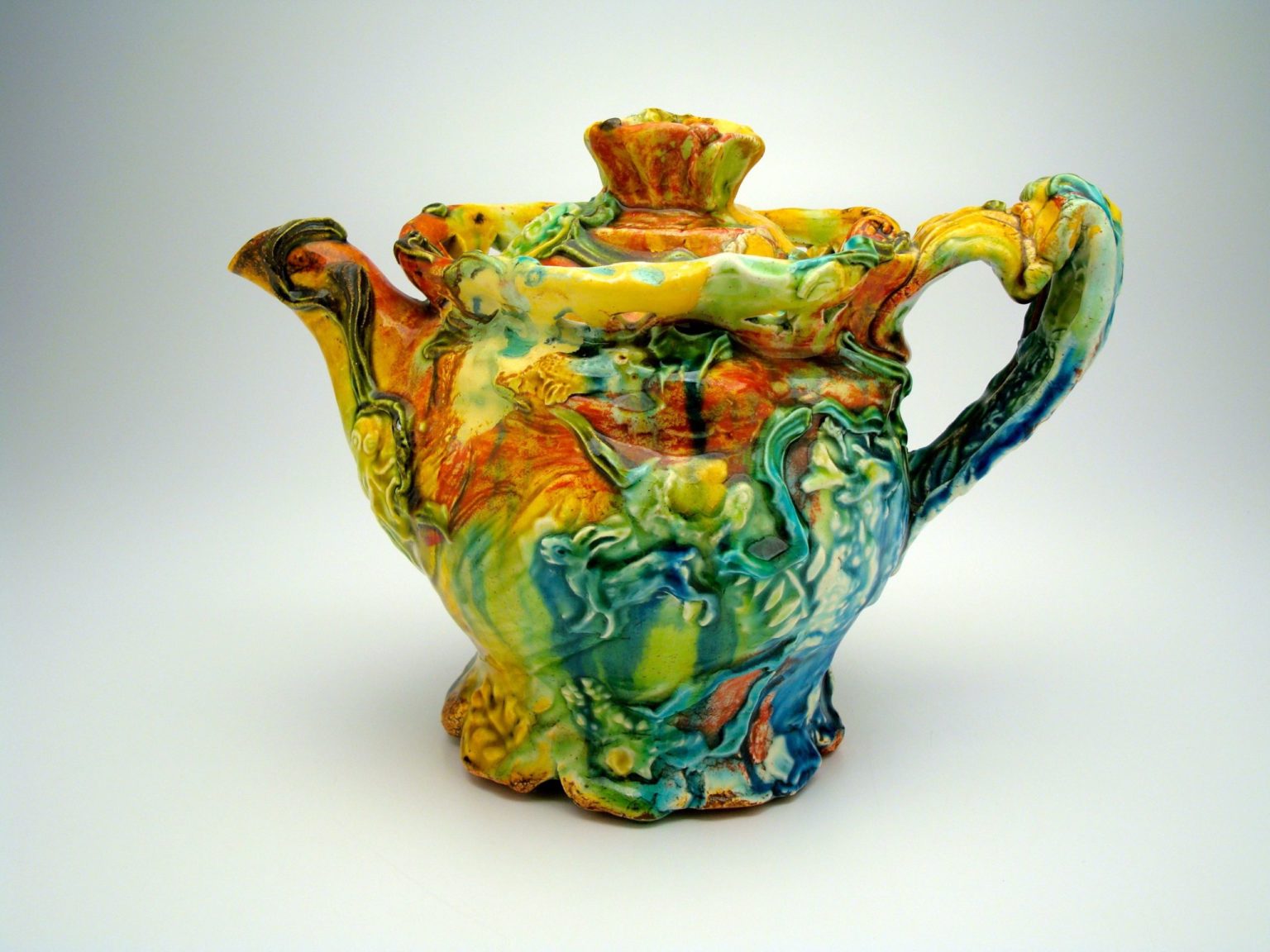
Lisa Orr, Teapot, low fire oxidation, hand built, 10 x 4 x 8 inches, Rosenfield Collection.
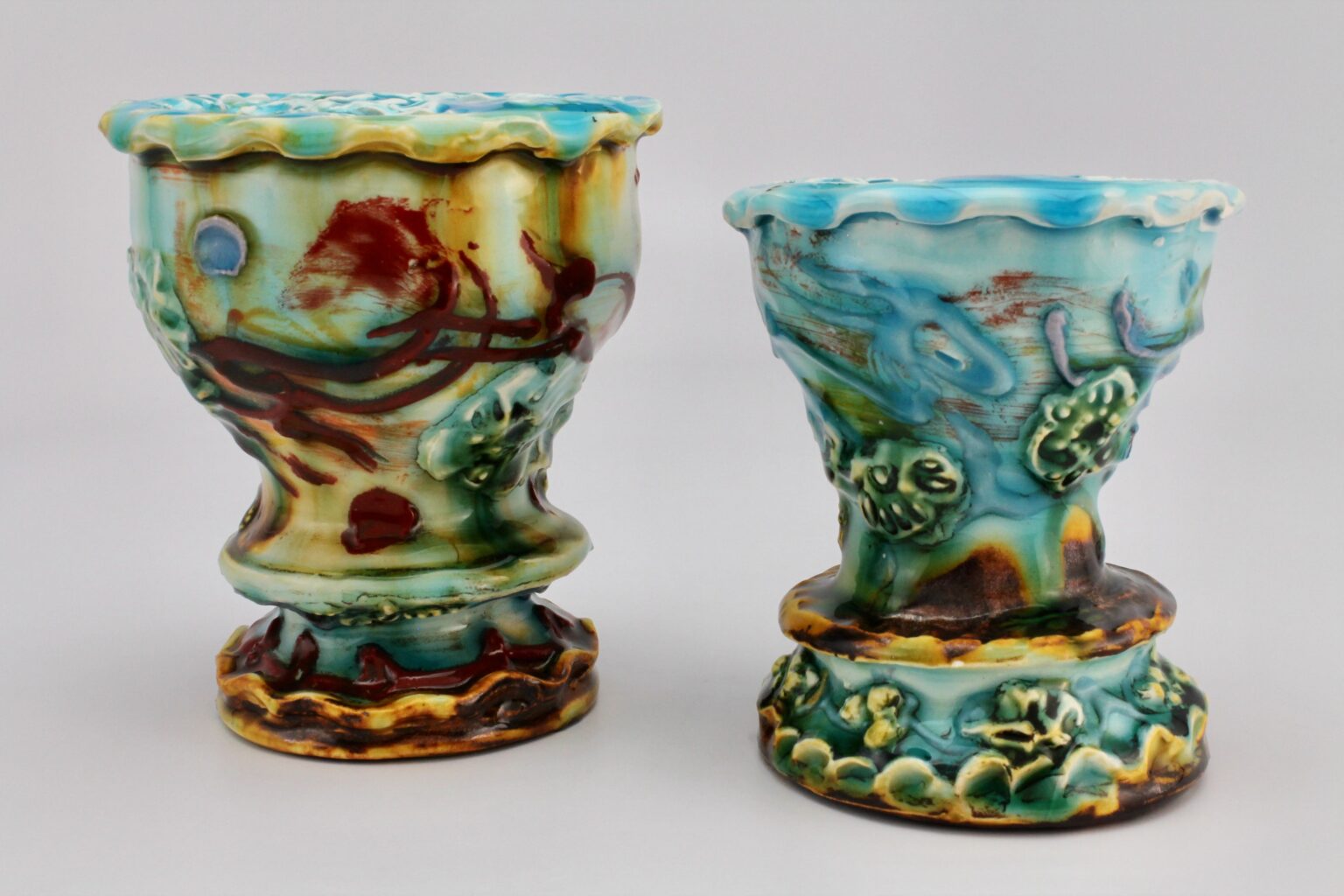
Lisa Orr, Vase, low fire oxidation, hand built, 4 x 4 x 5 inches, Rosenfield Collection.

